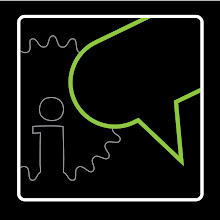This past weekend at Team Indiebike's spring training camp in Franklin, TN we experienced something unfamiliar and refreshing. By in large, motorists in and around the Nashville area seemed to coexist peacefully with cyclists. This phenomenon has yet to make its way north to central Indiana in spite of the ever increasing miles of bike lanes. In the absence of signs and stripes on the road to keep everyone in their proper place, even the late model, full size pickup trucks in TN seemed agreeable when encountering the occasional group of cyclists. It made me wonder. What accounts for this unusually harmonious balance? It seemed that drivers had reckoned with the notion of sharing "their" roadways with other, much smaller, vehicles.
It begged the question. How does this shift in thinking occur? It couldn't simply be southern hospitality. My belief is that gradually, as a result of the increasing frequency of encounters, both motorists and cyclists eventually realized that most of the individuals on each side were actually decent people who showed courtesy to the one another. Only when this common courtesy is displayed from both sides can each exist with the other peacefully and safely.
As cyclists, and one equal part of this equation, we have a responsibility to move the relationship in the right direction. I recently came across the following list of dos and don'ts created by the Oregon Bicycle Racing Association. Following a few simple, common sense, principles like these is probably the best way that we can make the roads a better, and safer, place for ourselves and others.
 1. Be courteous and share the road. Being courteous gains respect and helps make the roads safer for all cyclists.
1. Be courteous and share the road. Being courteous gains respect and helps make the roads safer for all cyclists.2. The law allows you to ride two abreast, but it may not be the courteous or safe option. If you hear a vehicle approaching from behind, ride single file. Don’t ride three abreast.
3. If you’re blocking a whole line of cars and there’s a place to safely pull off be courteous and stop.
4. Don’t wander all over the road. Try to ride predictably and as far right as safely as you can. This does not mean to ride in an area that is littered with road debris or places you at risk.
5. Do take the lane if it safe to do so if there is a blind corner, high-risk junction or narrowing of the road.
6. Use common sense — don’t pee in people’s yards or hang out across the entire road if you’re waiting for a regroup.
7. Stop at stop signs and signals. By law, cyclists must obey all traffic control devices.
8. Signal your intentions if you can safely do so. If you are turning, point in the direction you plan on going. If you are slowing, put your hand out behind you.
9. If you wave a car around you, don’t get impatient. Remember that it is their decision to make as to whether it is safe to pass.
10. If you’re in a group, take leadership, set a good example and do your best to make everyone ride courteously.
11. Pay attention! While it is the responsibility of drivers to avoid hitting you, ride defensively to minimize risk!
12. Remember the 5% rule. 5% of drivers are jerks. Don’t let that 5% get to you. Take a deep breath and move on.
13. Be friendly. If someone is courteous to you and does the right thing, wave and smile. Everyone likes to be acknowledged for doing the right thing.



No comments:
Post a Comment